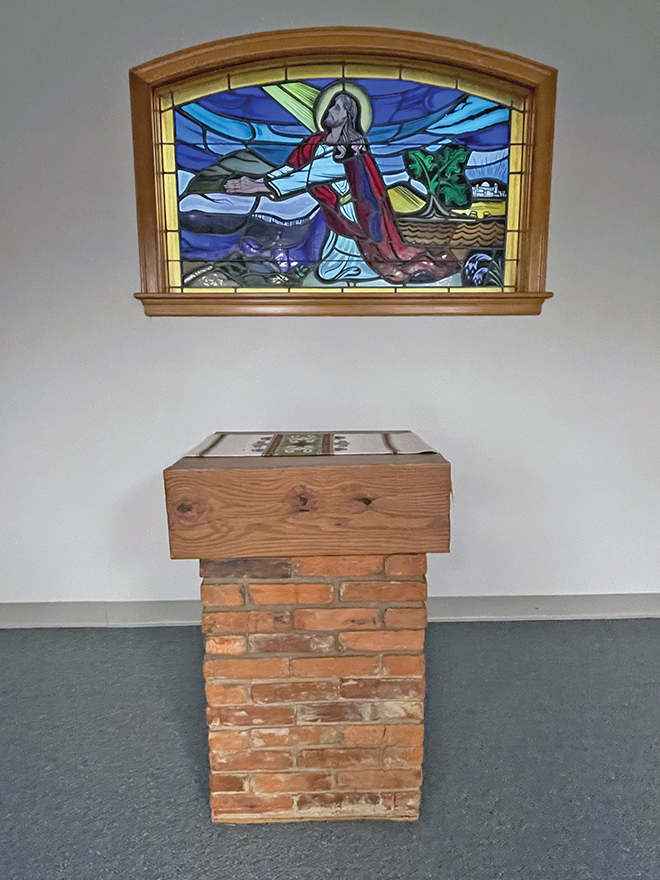180 years: Jefferson Prairie celebrates an anniversary
180 years: Jefferson Prairie celebrates an anniversary
On July 7, Jefferson Prairie Lutheran Church held celebration on church grounds for their 180th year of ministry and mission in the stateline area.
Held in conjunction with Capron Lutheran Church, who were also celebrating 180 years, the churches pulled together to deliver a joyful day of potluck food at the Old-Fashioned Prairie Picnic, fellowship, games, and all-around fun.
History of the church
Located at 23184 Bergen Rd. in Poplar Grove, on the Illinois/Wisconsin border between Clinton and Belvidere, Ill., Jefferson Prairie Lutheran Church has a rich history.
The Jefferson Prairie settlement is recognized as the first Norwegian settlement in Wisconsin. Ole Nattestad was the first Norwegian settler to reach Wisconsin, drawing others to the area. After their arrival, some settlers moved on to Rock Prairie (Luther Valley, Wis.), Koshkonong (Wis.) and Long Prairie (Capron, Ill.).
The earliest settlers on Jefferson Prairie were Christians, who brought their strong faith with them and soon formed two churches – the East Church and the West Church. The Rev. J.W.C. Dietrichson organized the East Church in 1844, which followed the worship style of the State Church of Norway. The congregation built the “brick church” in 1848. The East Cemetery was established next to it. When the brick church was taken down, the bricks were used to construct a house, which later burned. In 1969, bricks were recovered from the fire and used to build an altar in the present church building.

(Submitted photo) Jefferson Prairie Lutheran Church boasts a rich and long history, as they just celebrated their 180th year. This brick lectern, under beautiful stained glass, tells the story of how when one of their two founding churches, East Church, had it’s bricks taken down and made into a house that later burned down in 1969, many bricks were salvaged and turned into the lectern that is present today inside their church.
The West Church was led by the Rev. Elling Eielson, who followed the Haugen style of worship, which was less formal and focused more on spirituality. The West Church met in a log meeting house built in 1846, until a larger church was built in 1858 at the present site of the West Cemetery. In addition to services in the church, they had devotions in member’s homes led by lay ministers.
In 1892, the congregations of the Jefferson Prairie settlement merged to form Jefferson Prairie Lutheran Church. The current parsonage was built by members, and the present church building was dedicated on May 3, 1903.
Jefferson Prairie Lutheran Church was the first successful Norwegian settlement and provided the foundation for future Lutheran churches in America. The church maintains two cemeteries – the aforementioned East Cemetery and West Cemetery – in which some of the earliest Norwegian settlers that came to Wisconsin are buried.
While the congregation is proud of their role in the history of Norwegian immigration, they also value the ministry they have provided to the stateline area – and around the world – for the last 180 years. As early as 1860, women in the churches at Jefferson Prairie sewed garments, knitted men’s socks, and pieced quilts together to raise money to be used when and where it was most needed. Since then, through socials, quilt-making, Norwegian suppers, and bake sales, the church women have continued to raise money to help those in need. The congregation is currently active in several ministries, including quilting, Family Promise of Greater Beloit, highway cleanup, collecting food and offerings for local food pantries, collecting items and offerings for Lutheran World Relief, collecting offerings for God’s Global Barnyard, weekly Bible study, an adult choir, a bell choir, youth activities, and Christian education.
Long-time congregation member Meredith Williams wrote beautifully of the church and her experience there:
“Forty-two years ago, I entered the narthex of Jefferson Prairie Lutheran Church, looked down the aisle at the altar, and immediately felt at home. While the structural ambiance of the architecture and adornments warmed my soul with their beauty, there was an ethereal warmth, too, in the way that the sanctuary was so peaceful and that the people of Jefferson Prairie welcomed me into their community. These things combined to give me strength for a new start in life; I was going to move here and marry a man whose pioneer ancestors raised the church through trials and tribulations 180 years ago.
“Time and time again, visitors who enter our church marvel at the fabulous stained glass windows and spectacular altar, but Jefferson Prairie Lutheran Church is more than a beautiful historical sight. As I have learned over the past decades, Jefferson Prairie is a country church on a mission to share God’s love and the good news of Jesus. It’s a place where caring people reach out to others far and wide, support the community through gracious helping-hands, and try not to marginalize others for who they are. It is a place of worship where all are welcome.”
Indeed, Jefferson Prairie Lutheran Church is a rural church that values the peacefulness and beauty their property offers members and neighbors. The community is always invited to use their gazebo, select a book from the Little Free Library on the grounds, and take time to meditate in their beautiful Prayer Garden.

